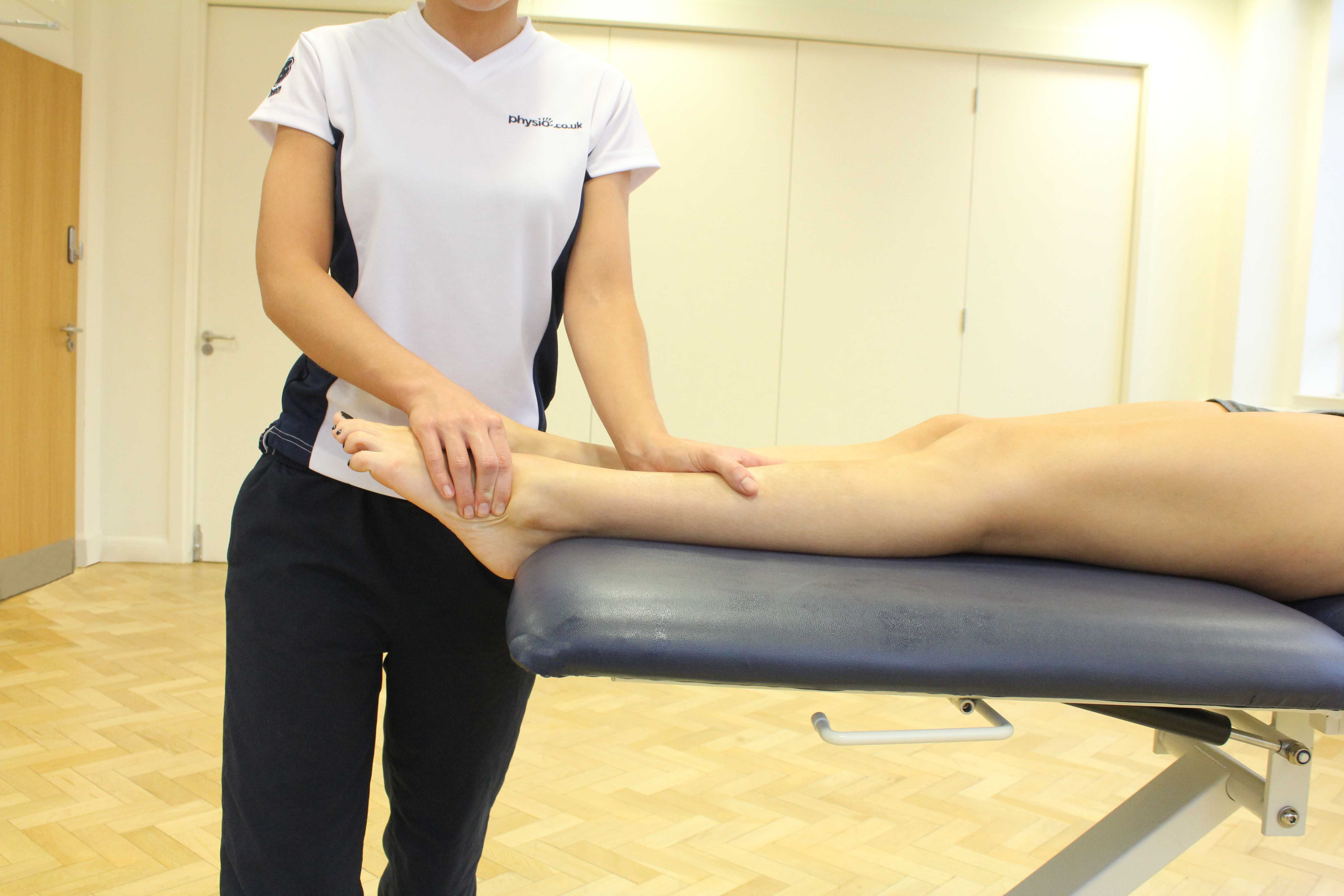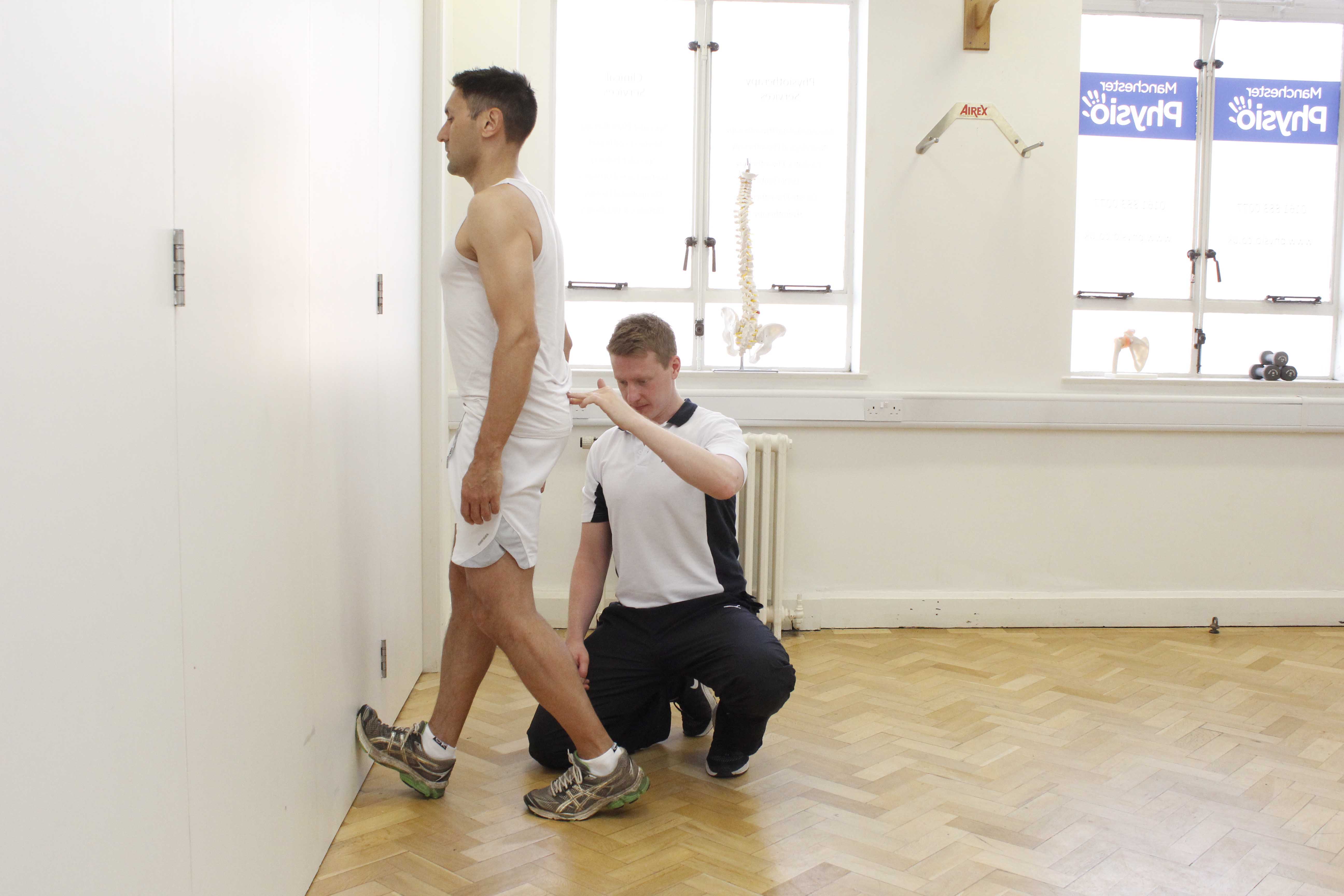What is a Mid-tarsal joint sprain?
A joint sprain refers to damage or tearing to the connective ligament tissue that stretches over a joint. Ligaments help hold joints together and keep their movements restricted within a desired range. This provides essential stability when joints are placed under the pressures of muscle action and external ground resistance forces.
A joint sprain can cause instability within the joint that may lead to greater damage if left untreated. Our experienced physiotherapists at Physio.co.uk can assess the sprain and address your specific issues with targeted treatments.
Mid-tarsal joint sprains usually result from the pressures of jumping and landing, consequently they are most commonly seen amongst people playing sports. The ligaments affected are responsible for stabilising the joints in the foot between the Talus, Calcaneus, Navicular and Cuboid bones. Specifically they are called the Calcaneocuboid ligament and the Calcaneonavicular ligament. Part of these ligaments join in a ‘Y’ shape across the joint which is referred to as the bifurcate ligament. Damage to any of the ligament tissues will produce very similar symptoms and require the same treatment approach.
 Above: Passive stretch of the connective tissues in the foot and ankle by experienced therapist
Above: Passive stretch of the connective tissues in the foot and ankle by experienced therapistWhat causes a joint sprain?
A joint sprain can occur when unusual forces are exerted on the joints causing stress to the connective tissue above its tensile strength, leaving damage to the tissues. These unusual forces can include;
- Functional overloading the ligament along its normal direction of pull, but with a stress it cannot handle.
- Sudden, rapid loading of the ligament, particularly after a prolonged period of rest.
- Rotational, twisting forces whilst loading the ligament compromise its fibres normal direction of pull, reducing the fibres functional strength.
- Repetitive strain or over use, where the ligament is given insufficient periods of rest between prolonged periods of loading activity.
- External impact, causing sudden stress to the ligament tissue often it directions of weak structural resistance.
These forces can occur in most normal activates of daily living but are more often experienced when playing sports. Any intense activity involving running, jumping, sudden stops and twisting, especially on uneven surfaces will put you at increased risk of injury. Additional risk factors could include biomechanical abnormalities such as flat feet, poor posture or poor sporting technique. Even inappropriate footwear during exercise can contribute to increased risk.
 Above: Active stretches of the foot and ankle performed under supervision by a specialist MSK physiotherapist
Above: Active stretches of the foot and ankle performed under supervision by a specialist MSK physiotherapistWhat are the signs and symptoms of a joint sprain?
Joint sprain can have a variety of different symptoms depending on the ligament effected and the severity of damage. Some of those symptoms could include;
- Pain, with sudden onset if the damage occurs during a single event.
- Aching, which gradually builds in intensity over time. Usually due to repetitive strain.
- Stiffness, particularly in the morning or after long periods of inactivity.
- Tenderness when the area over the affected ligament is pressed.
- Swelling, usually rapid and obvious where the ligaments pass over bony surfaces.
- Redness, sometimes leading onto bruising discolouration depending on severity of sprain.
Diagnosis of a joint sprain
A physical assessment from a physiotherapist or a doctor can diagnose a joint sprain, and identify which ligament has been injured. There are three types of sprain, categorised by the level of damage done to ligament. The three grades of severity are as follows;
- Grade I: Mild sprain, when only minor stretching or tearing to the ligament tissue occurs.
- Grade II: Moderate sprain, partial tear to ligament tissue but still intact. Limited function.
- Grade III: Severe sprain, ligament is completely torn causing joint instability.
Your treatment will be tailored to address the assessed level of damage and adjusted to be functional based on the ligaments location. If you have a significant tear to the ligament, an MRI scan may be required to highlight the severity of your injury.
For more information on how physiotherapy can help treat joint sprains, or to book yourself an assessment, please email us at office@physio.co.uk or call 0330 088 7800.
What would a physiotherapy assessment for Joint Sprain involve?
At Physio.co.uk, we want to gain as much information as possible about your injury to ensure we give you the best treatment. In your first appointment with us, our physiotherapists will carry out an assessment which has two parts:
Subjective
A discussion between you and our physiotherapist to find out the cause of your injury and what symptoms you are experiencing, and how your injury is affecting you and your lifestyle.
Objective
An assessment of your range of pain, range of movement, and a series of special tests to identify the presence of the Joint Sprain.
If you have a complete tear of the Ligament you may require surgery to repair the damage enough for the healing to begin. In this case, our physiotherapists would be happy to see you for assessment and treatment after your surgery to help you recover.
What would physiotherapy treatment for Joint Sprain involve?
Following on from the comprehensive physiotherapy assessment, our experienced therapists at Physio.co.uk can apply targeted treatments to reduce your pain and facilitate a quicker recovery. Having assessed your mobility, pain and functional strength the physiotherapist can tailor a treatment plan to return you to your normal activities in the best possible condition.
Physiotherapy treatment at Physio.co.uk may include:
- Stretch and strengthening exercises to maintain muscle function and length.
- Mobilisations to maintain joint range of motion.
- Balance training to improve joint stability, reduce risk of re-injury.
- Soft Tissue Massage to reduce swelling, pain and encourage healing.
- Taping, to encourage better posture and joint awareness.
- Heat treatments, including ice, to promote blood flow and healing.
- Ultrasound therapy to promote healing in the soft tissues.
- Advice on activity modification, including safe return to sports participation.
Your treatment at Physio.co.uk will aim to reduce your symptoms of pain, decrease any swelling and restore strength and flexibility to the ligaments present in the foot. All this will be tailored to produce an effective functional rehabilitation back to the normal tasks you need and the sports you enjoy.
In cases of ankle joint instability and poor foot and ankle posture, our physiotherapists can refer you to an orthotist for insoles that will aid in your rehabilitation. Biomechanical or gait analysis may be used in the later stages of rehabilitation to advise you how to reduce the risks of re-injury.
How can I arrange a physiotherapy assessment for Joint Sprain?
If you are experiencing pain, aching, stiffness and show signs of inflammation in one of your joints, you may have a sprain and would benefit from an assessment form one of our experienced physiotherapists.
You can contact us directly to arrange an assessment and we can advise you if further treatment is recommended, or give you details on self-management for minor cases. To arrange an appointment please email office@physio.co.uk or call 0330 088 7800.
Summary
Joint pain can affect people from all backgrounds and levels of activity. It can present as minor aching and discomfort or as a severe pain inhibiting normal activity. The level of damage may not always be obvious, so early diagnosis is important to avoid further injury and achieve the best possible recovery.
At Physio we want to ensure you get the best treatment for your injury and we will use ice therapy, massage, stretch and strengthening exercises as appropriate, to help you recover.
For more information on how physiotherapy can help treat joint sprains, or to book yourself an assessment, please email us at office@physio.co.uk or call 0330 088 7800.

 0330 088 7800
0330 088 7800


































